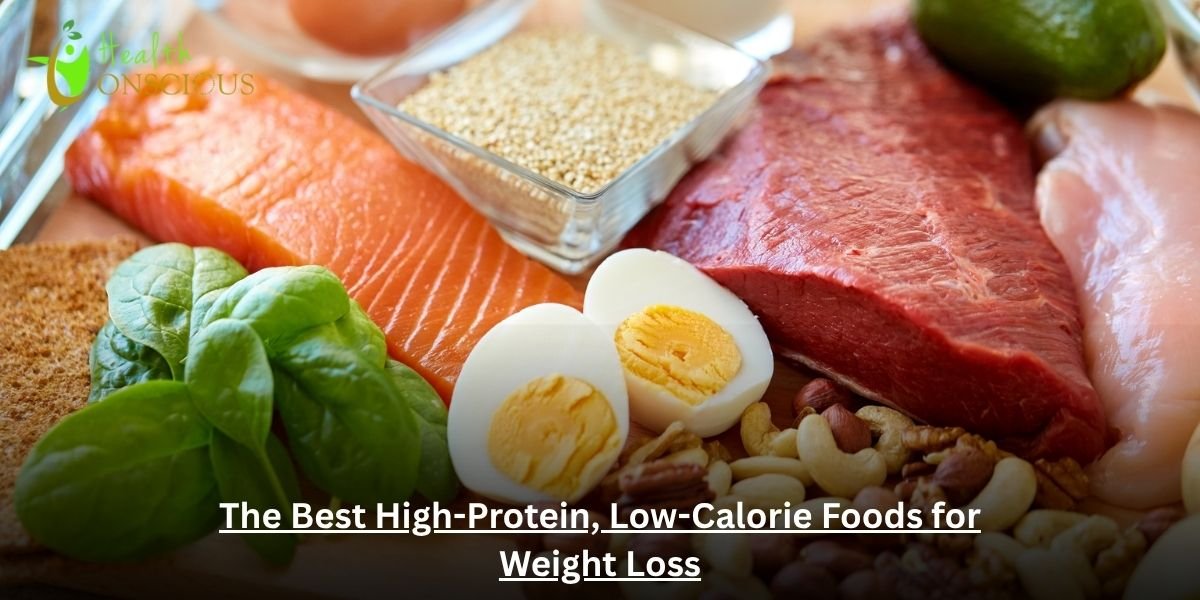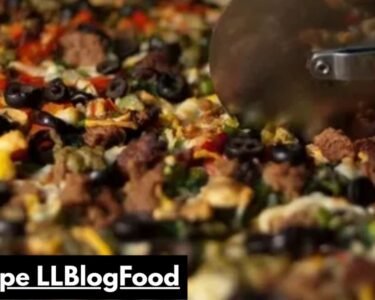Key Takeaways
- High-protein, low-calorie foods are essential for weight loss as they increase satiety and boost metabolism.
- Protein helps preserve muscle mass, which is crucial for maintaining a healthy metabolism during calorie restriction.
- Lean meats, fish, eggs, and dairy are excellent sources of protein with minimal calories.
- Plant-based options like legumes, tofu, and edamame are also effective for a high-protein diet.
- Incorporating a variety of protein sources into your daily meals and snacks is key to success.
Introduction to High-Protein, Low-Calorie Foods
Struggling to shed those extra pounds? The solution might be simpler than you think: focusing on your protein intake. For years, protein has been celebrated by fitness enthusiasts for its role in muscle building, but its power in weight management is equally impressive. Shifting your diet to include more high-protein, low-calorie foods can be a game-changer for weight loss, helping you feel fuller for longer and boosting your metabolism. This guide will explore the best foods to include in your diet and explain the science behind why this approach works.
The Science Behind Protein and Weight Loss
The link between a high-protein diet and weight loss is not just a trend—it’s supported by robust clinical evidence. A study published in the Journal of Obesity & Metabolic Syndrome highlights that high-protein diets can significantly reduce body weight and fat mass while preserving fat-free mass. This is primarily due to two key mechanisms:
- Satiety and Appetite Control: Protein is the most satiating macronutrient. Consuming it triggers the release of hormones like glucagon-like peptide-1 (GLP-1) and peptide tyrosine-tyrosine (PYY), which signal to your brain that you are full. This can lead to a natural reduction in overall food intake and a decrease in cravings.
- Increased Thermic Effect of Food (TEF): Your body expends energy to digest food. This process is referred to as the thermic effect of food. Protein has a significantly higher TEF (20-30%) compared to carbohydrates (5-10%) and fats (0-3%). This means you burn a substantial number of calories just by processing protein-rich meals, giving your metabolism a natural lift.
What Foods Are High in Protein?
Identifying high-protein foods is the first step toward a successful diet. Protein comes in various types, sourced from both plants and animal products. Animal-based foods are known as “complete” proteins since they provide all nine essential amino acids required by the body. These include poultry, fish, meat, and dairy. Plant-based sources, while often “incomplete,” can provide a full amino acid profile when consumed in a varied diet. These include legumes, nuts, seeds, and certain grains. The key is to choose options that are not only high in protein but also low in calories to support weight loss goals.
To help you get started, here is a table of some common high-protein foods and their approximate nutritional values.
| Food Source | Serving Size | Approximate Protein (grams) | Approximate Calories |
| Skinless Chicken Breast | 3.5 oz (100g) cooked | 31 | 165 |
| White Fish (Cod) | 3 oz (85g) cooked | 19 | 90 |
| Shellfish (Shrimp) | 3.5 oz (100g) cooked | 24 | 99 |
| Eggs | 1 large whole egg | 6 | 78 |
| Greek Yogurt (non-fat) | 6 oz (170g) | 17 | 100 |
| Cottage Cheese (low-fat) | 1 cup (226g) | 28 | 163 |
| Salmon | 3.5 oz (100g) cooked | 22 | 206 |
| Tofu | 3.5 oz (100g) firm | 8 | 76 |
| Lentils | 1 cup (198g) cooked | 18 | 230 |
| Lean Beef (Sirloin) | 3 oz (85g) cooked | 25 | 180 |
The Best High-Protein, Low-Calorie Foods
Here are the best protein sources to help you lose weight, ranked by their effectiveness and nutritional value.
Skinless Chicken Breast
A cornerstone of many healthy diets, skinless chicken breast is one of the leanest protein sources available. As per USDA data, 4 ounces of raw, skinless, boneless chicken breast offer around 26 grams of protein for just 110 calories. The majority of the fat is in the skin, which is why opting for skinless is so important for weight loss. Its mild flavor and versatility make it an easy addition to salads, wraps, and stir-fries.
Turkey Breast
Similar in nutritional value to chicken, turkey breast is another excellent choice. The American Heart Association notes that a 3-ounce serving of roasted turkey breast without the skin contains only about 1.8 grams of fat and 125 calories. Turkey is also rich in B-complex vitamins, including niacin, B6, and B12, which are crucial for energy metabolism.
White Fish (Cod, Haddock, Tilapia)
Lean white fish, such as cod, is high in protein and extremely low in both fat and calories. A cooked 85-gram (3-ounce) serving of Atlantic cod contains about 19 grams of protein and just 90 calories. It is also a good source of B vitamins and minerals like selenium, which support your immune system.
Shellfish (Shrimp, Scallops, Crab)
Shellfish are seafood powerhouses for protein. Shrimp, scallops, and crab are all incredibly lean and provide a high-quality, easily digestible source of protein. For example, a 3.5-ounce (100-gram) serving of shrimp contains roughly 24 grams of protein and just 99 calories, along with essential vitamins like B12 and minerals like zinc.
Eggs and Egg Whites
Eggs are rich in nutrients and offer a well-balanced source of high-quality protein. One large egg contains about 6 grams of high-quality protein and a modest 78 calories. For those looking to maximize protein while minimizing calories, egg whites are an ideal choice. One large egg white contains 4 grams of protein and just 17 calories. Eggs are a great way to start your day, as they can significantly increase satiety and reduce calorie intake later on, as a study published in WebMD suggests.
Greek Yogurt (Non-fat or Plain)
Greek yogurt is produced by straining out liquid whey, resulting in a thicker texture and a notably higher protein content compared to regular yogurt. A typical 6-ounce serving of plain, non-fat Greek yogurt can offer up to 17 grams of protein for only around 100 calories. Its slow-digesting protein makes it an excellent snack to keep hunger at bay.
Cottage Cheese
This creamy, fresh cheese ranks among the top protein-rich choices found in the dairy aisle. One cup of low-fat cottage cheese provides roughly 28 grams of protein for just 163 calories. Cottage cheese is also a great source of casein protein, which digests slowly and helps promote a feeling of fullness for an extended period, making it a perfect late-night snack.
Salmon (and Other Oily Fish)
While slightly higher in calories than white fish, salmon is an exceptional choice due to its high content of protein and beneficial omega-3 fatty acids. A 3.5-ounce serving provides around 22 grams of protein and is rich in EPA and DHA, which are crucial for brain and heart health. The healthy fats in salmon also help to increase satiety and keep you full.
Lean Beef (Sirloin, Tenderloin)
Selecting the right lean cuts of beef can make them a useful addition to a weight-loss-friendly eating plan. Cuts like sirloin or tenderloin are low in fat and provide high-quality protein. A 3-ounce serving of lean ground beef (95% lean) contains over 24 grams of protein and is a great source of iron, zinc, and B12, according to nutritional data from the University Hospitals.
Tofu, Tempeh, and Edamame
For those following a plant-based diet, these soy-based foods are a triple threat. Tofu, tempeh, and edamame are complete proteins, meaning they contain all nine essential amino acids. Tofu is incredibly versatile, while tempeh, made from fermented soybeans, has a nutty flavor and firm texture. Edamame, or whole soybeans, make for a fiber-rich, protein-packed snack. A cup of shelled edamame provides about 17 grams of protein and 8 grams of fiber for just under 200 calories.
Legumes (Lentils, Beans, Chickpeas)
Legumes are a fantastic source of plant-based protein and dietary fiber. Lentils, chickpeas, and various beans are low in fat and packed with nutrients. One cup of cooked lentils contains about 18 grams of protein and 16 grams of fiber, which helps you feel full and supports digestive wellness.
Nuts and Seeds (Almonds, Pumpkin Seeds, etc.)
While they are higher in calories due to their fat content, nuts and seeds are a valuable addition to a high-protein diet when eaten in moderation. Almonds and pumpkin seeds stand out as excellent sources of both protein and heart-healthy fats. An ounce of almonds contains about 6 grams of protein, while pumpkin seeds offer around 7 grams. These healthy fats and fiber help slow digestion and keep you satisfied.
How to Incorporate These Foods into Your Diet
- Start Your Day with Protein: Add Greek yogurt, eggs, or a protein smoothie to your breakfast to feel full until lunchtime.
- Make Protein a Priority at Every Meal: Aim to include a lean protein source in every meal to balance your macronutrients and control cravings.
- Use Protein as a Snack: Instead of reaching for high-carb, sugary snacks, choose cottage cheese, a hard-boiled egg, or a handful of almonds to curb hunger.
- Meal Prep: Cook a batch of chicken breast or lentils at the beginning of the week to have a quick and easy protein source ready for your meals.
Is a High-Protein Diet for Weight Loss Good for Everyone?
For most healthy people, consuming a high-protein diet is considered safe. Still, it’s crucial to stay conscious of your overall health. The National Kidney Foundation recommends that people with chronic kidney disease (CKD) who are not on dialysis limit their protein intake, as excess protein can stress the kidneys. It’s always best to consult with a healthcare professional or a registered dietitian before starting any new diet, especially if you have pre-existing medical conditions like kidney or liver problems.
Final Remarks
Adopting a high-protein, low-calorie diet is a sustainable and effective strategy for weight loss. By understanding the scientific mechanisms behind proteins’ impact on satiety and metabolism, you can make smarter food choices that support your goals. Focus on incorporating a variety of lean meats, fish, dairy, and plant-based proteins into your meals. This approach will not only help you shed pounds but also improve your overall health and well-being.
FAQs
Can a high-protein diet cause kidney damage?
Studies show that high-protein diets do not harm kidney function in individuals with no existing kidney issues. However, people with pre-existing kidney disease should follow a low-protein diet as recommended by their doctor to avoid stressing the kidneys.
Do I need to count calories on a high-protein diet?
While a high-protein diet naturally helps with calorie control by increasing satiety, tracking your calories can be useful to ensure you are in a consistent calorie deficit for weight loss.
Are protein shakes a good way to lose weight?
Protein shakes can be a convenient supplement to increase protein intake, but whole food sources are generally recommended. Whole foods offer a wider range of vitamins, minerals, and fiber that shakes may lack.
Can I still eat carbs on a high-protein diet?
Yes, a balanced diet is key. You should include complex carbohydrates from sources like whole grains, fruits, and vegetables for essential energy and fiber, which are vital for overall health.



